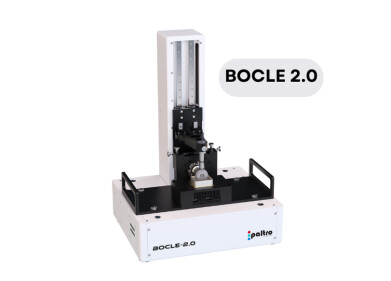Lubricant analysis
Why is Lubricant Analysis Important?
Nov 10 2022
Lubricant analysis is one of the most valuable tools available to mechanical operators. What makes it so useful? Analysing the physical and chemical properties of lubricating oils is a fast, efficient and accurate way to predict performance and determine suitability for different applications.
Analysis of circulating lubricants can also be instrumental when assessing the overall health of mechanical systems. Read on to find out more about the two key roles of lubricant analysis and how techniques help operators maximise efficiency, minimise unplanned downtime and extend the lifespan of mechanical assets.
Performance and suitability
The performance of lubricants is determined by their unique physical and chemical properties. Analytical techniques like RDE-Optical Emission Spectroscopy, Infrared Spectroscopy and X-Ray Fluorescence are used to analyse these properties and predict how a lubricant will perform under certain conditions. For example, lubricants with high viscosity are ideal for heavy load applications, such as machinery used in the manufacturing and industrial industries. In comparison, less viscous lubricants are preferred for light duty applications and smaller components.
Predictive maintenance
In an article published in the International Journal of Engineering Research & Technology (IJERT), the authors describe lubricants as “the life blood of oil wetted machinery.” They proceed to spotlight the role of lubricant analysis for predictive maintenance and failure analysis. How does it work?
Every year, industries spend billions of dollars replacing worn out mechanical components that haven’t been properly lubricated. Proactively gathering and analysing data on important mechanical health indicators like lubricant quality helps operators strategically schedule maintenance.
“One of the keys to keeping machinery operating at optimal performance involves monitoring and analysing lubricant oils for characteristics such as contamination, chemical content and viscosity,” reads the IJERT abstract. “Knowing how to interpret changing lubricant properties scan increase both the uptime and the life of your mission critical capital equipment.”
Lubricant analysis is also used to identify mechanical issues before they escalate and lead to unplanned downtime and critical failure. “The existence or amount of debris and particles from wearing parts, erosion and contamination provide insights about the issues affecting performance and reliability,” write the authors.
The market for lubricating oils and greases is continually growing, with chemical engineers continually developing new products, technologies and solutions. Dr. Raj Shah, Director at US-based petroleum testing services group Koehler Instrument Company was recently recognised for his contributions to the industry. Find out more about the accolade in ‘Dr. Raj Shah, Director at Koehler Instrument Company awarded the Clarence E. Earle Memorial Award and the Golden Grease Gun Award’.
Digital Edition
PIN 26.1 Feb/Mar 2025
March 2025
Analytical Instrumentation - Elemental Analysis for Quality and Process Control at Refineries, for Lubricants and Wear Metals in Engine Oils - Synthetic Lubricants: New Developments - Scaling...
View all digital editions
Events
Apr 08 2025 Birmingham, UK
Apr 08 2025 Kielce, Poland
Apr 08 2025 Ravenna, Italy
Apr 08 2025 Southampton, UK
Apr 08 2025 London, UK



















